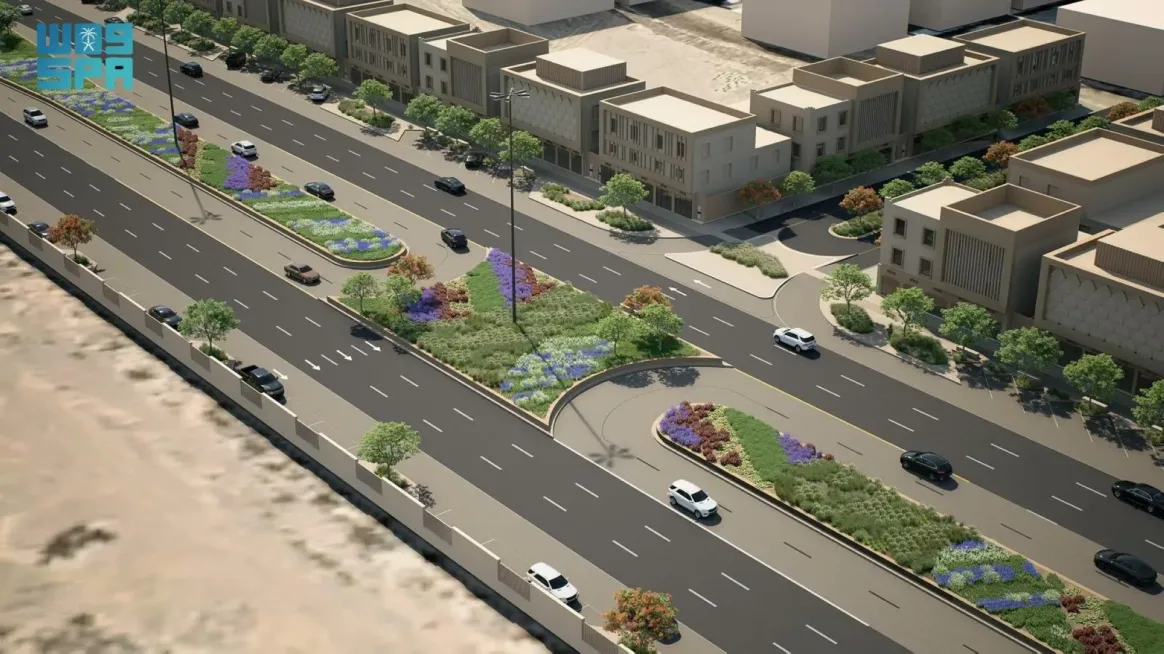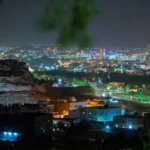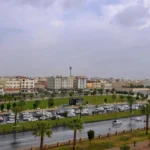The Riyadh Region Municipality is implementing the development project for Prince Faisal bin Bandar Road, which stretches from its intersection with King Salman bin Abdulaziz Road in the south to the Aramco oil pipeline in the north, with a total length of 15.5 kilometers.
The project enhances connectivity between neighborhoods and improves traffic flow in the northern part of the capital
The developmental project, which improves connectivity between neighborhoods and enhances traffic flow in the northern part of the capital, includes the construction of a main road with three lanes in each direction, along with dedicated service lanes, while also humanizing the road and developing its urban elements.
The project improves intersections through three smart traffic signals, widens sidewalks, implements pedestrian walkways and bike lanes, upgrades entrances and parking areas, and provides inclusive accessibility facilities to serve all user groups. It also achieves several developmental, traffic, and environmental goals, primarily increasing the road’s capacity and reducing congestion, especially in commercial and vital areas, by expanding the road to three lanes in each direction.
The project components include implementing a 34.3 thousand-meter-long flood drainage network, extending a 67.2 thousand-meter irrigation network, paving roads covering 558.7 thousand square meters, rehabilitating sidewalks spanning 476.4 thousand square meters, creating 6.8 thousand car parking spaces, 240 bike parking spots, and 62 dedicated entrances to serve adjacent sites.
The road will feature a 20 thousand-meter-long dedicated bike path, the installation of 1.8 thousand modern lighting poles, and the placement of 500 seating benches. Additionally, 43.3 thousand square meters of green spaces will be developed, with 7 thousand trees and 28.7 thousand shrubs planted as part of site landscaping and urban beautification efforts.
The project also organizes entrances and exits and develops intersections to allow higher traffic flow, reduce conflict points and bottlenecks, and improve traffic movement along the road by redesigning lane geometry, preparing service lanes, and activating smart traffic signals at intersections. This enhances connectivity between northern Riyadh neighborhoods and minimizes frequent stops.
It focuses on enhancing traffic safety by providing a secure environment for pedestrians and cyclists, ensuring clear crossing paths and equipped sidewalks, while considering universal accessibility requirements for the visually impaired and people with disabilities, making the road accessible to all users.
On an urban level, the project supports improving the cityscape and enhancing quality of life through an integrated design that includes sidewalks, seating, walkways, landscaping, and green spaces, while considering visual coordination elements and organizing public spaces.
Regarding previous infrastructure challenges, particularly in flood and irrigation networks, the project implements modern networks to ensure road sustainability and improve maintenance and operational efficiency.






